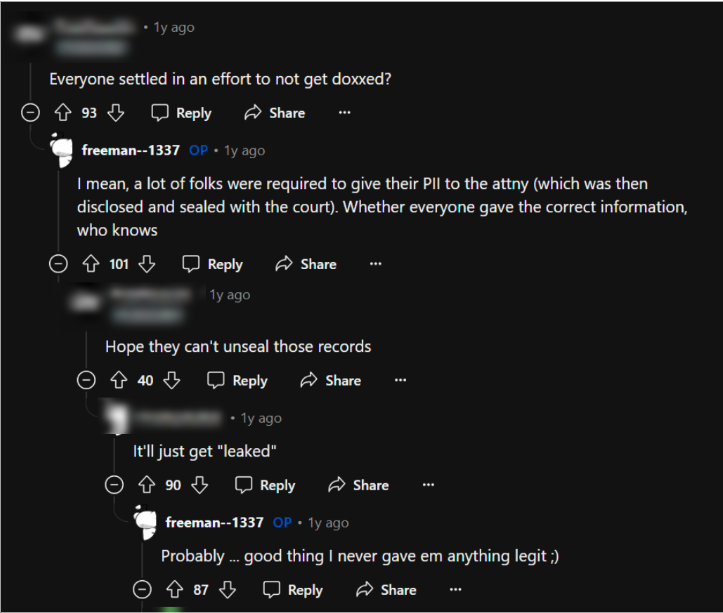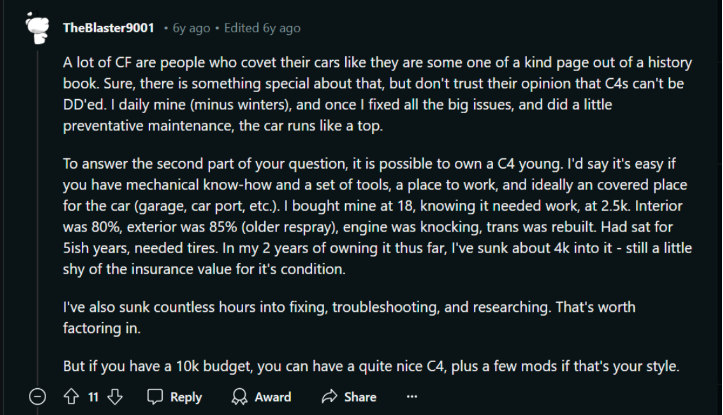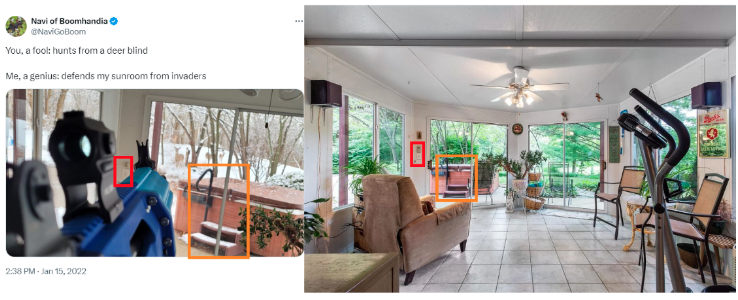The broad 3D-printed gun movement has a strong libertarian ethos. While many participants are simply hobbyists attracted to the technical or aesthetic aspects of the guns, there is a distinctive ideological dimension to the movement (known as Gun Computer-Aided Design, GunCAD, or 3D Second Amendment, 3D2A). One central tenet is that bearing arms is a (universal) human right, whether for individual self-defence or as a collective safeguard against government tyranny. GunCAD is thus deeply sceptical of State interference in citizens’ lives and heavily influenced by US Second Amendment culture.
Cody Wilson, the creator of the first ever 3D-printed gun, the Defense Distributed group, and the DEFCAD file-sharing site, was emphatic in his libertarian, pro-gun views. Jacob Duygu (better known by the pseudonym “JStark1809”), the founder of an influential network of gun developers called Deterrence Dispensed, was just as explicit in his attempts to end gun control. The name he chose for a gun he designed was self-explanatory: the “Fuck Gun Control 9mm” (FGC-9). Such sentiments are also regularly expressed by their supporters.
This worldview – combined with an irreverent Internet culture – means that the movement is inherently adversarial towards advocates of gun control. At its most confrontational, this can manifest in the flouting of local gun laws. Other times, it can also consist of the trolling of lawmakers, law enforcement, lobby groups, or tech companies. Yet GunCAD’s courting of controversy can lead to legal troubles. One such controversy involves a lawsuit filed by the gun control advocacy nonprofit Everytown For Gun Safety against several GunCAD figures, unveiling much of how the movement operates.
This Insight examines some aspects of GunCAD’s adversarial behaviour and the revelations and fallout from the Everytown lawsuit.
Ban Evasions, Commercial Enterprises, and Trolling
Many within GunCAD attempt to evade bans and moderation from social media platforms. One notable streamer, for instance, regularly publishes YouTube videos talking about new prototype designs for 3D-printed guns and surreptitiously sharing details on where to locate them. This is likely in contravention of YouTube’s firearms policy. However, to avoid being banned, the video footage is entirely unrelated; often, it is taken from video games, with the text “THIS IS A GAMING VIDEO” as its thumbnail. Similarly, YouTube videos providing instructions on manufacturing parts of the FGC-9 remain online. Yet in other instances, 3D-printed gun content from other creators, that ostensibly did not contain instructional guidance, has been removed by YouTube. YouTube’s enforcement of its firearms policy can thus appear inconsistent.

Figure 1: A screenshot of YouTuber discussing 3d gun content.
Commercial enterprises have used similarly evasive tactics to sell gun components. For instance, “lightning links” are metal devices that turn a semi-automatic AR-15 into a fully automatic one. These were sold online as seemingly innocuous “bottle openers” and “pen holders”. Similarly, auto sears (3D-printable parts that convert some guns to fully automatic) have been sold as “portable wall hangers”. Such euphemisms have become an in-joke within GunCAD and are also used to describe legal activities: one business, run by prominent figures from the movement, sells parts kits for 3D-printed guns (such as barrels and fire control groups) by labelling them as “windchimes”.
Establishment political figures have also been trolled. In 2019, New Jersey Senator Robert Menendez lobbied to ban influential 3D-printed gun designer “Ivan the Troll” from Twitter. Ivan, a leading member of Deterrence Dispensed, was eventually banned but reappeared under a different username. In response, he designed and released the “Menendez Mag”, a 3D-printable Glock magazine, in 2019. The “Extendez Mag” – an extended magazine with a 30-round capacity – followed shortly after. Ivan stated his rationale:
“[Menendez] actively pressured private compaines (sic) to shutter accounts of mine to suit is (sic) political agenda. So found it fitting to tarnish his name with a ‘high capacity’ magazine that will exist as long as the internet does. Sorry Bobby. Step on snek, snek steps back.”
Trolling of Everytown for Gun Safety
Such trolling extended to the gun control advocacy nonprofit Everytown For Gun Safety. Formed by a 2013 merger of “Mayors Against Illegal Guns” and “Moms Demand Action For Gun Sense”, the group campaigns to regulate 3D-printed firearms – among other gun control issues – particularly around the sharing of digital blueprints or serialisation. Currently, most US states do not have regulations targeting the serialisation of 3D-printed firearms.
One GunCAD designer, “Freeman1337”, created the digital blueprints for a .22 LR magazine online. He named it “The Everytown Mag”. Another design, created by user “xYeezySZN”, featured Everytown’s logo. The designs were published on Odysee, by an account run by “The Gatalog” (associated with Deterrence Dispensed), and DEFCAD (a website that hosts digital blueprints, associated with Wilson and Defense Distributed).
In response, Everytown filed a claim for copyright infringement against the two designers, The Gatalog, and DEFCAD. The defendants’ lawyer was initially paid for by the Firearms Policy Coalition (FPC) and then DEFCAD. The lawsuit was eventually settled, with the defendants agreeing to remove the infringing files from both platforms. However, the lawsuit revealed several details about the figures involved, collaboration within the movement, and tensions between different camps.
The Fallout Within GunCAD
Remarkably, Freeman1337 appeared to insinuate that he had not given “legit” personally identifiable information to the attorney and had instead given a random person’s “bogus address” as his own (see Figures 2 and 2). In return, he was criticised by others within the 3D-printed gun community for potentially implicating a random person. His alleged deception indicates the lengths some individuals within GunCAD may go to remain anonymous, even in the face of legal pressure.


Figures 2 and 3: Freeman1337 comments on Reddit about the Everytown lawsuit
The lawsuit added to tension within GunCAD, especially between Cody Wilson (Defence Distributed, DEFCAD) and the pseudonymous “Fuddbusters”, “Ctrl-Pew”, and “Ivan the Troll” (Deterrence Dispensed and The Gatalog). While both camps espouse libertarian ideals over gun ownership, they have disagreed over the sharing of digital blueprints. DEFCAD uses a FOSS (Free and Open-Source Software) license on their files to allow anyone to modify and repost on the Internet. However, access is restricted to US citizens/residents who pay a membership fee (currently from $60USD annually).
The Gatalog, meanwhile, does not charge its users and alleges that Wilson unfairly profiteers from their designs. In January 2024, Ivan the Troll publicly criticised him and DEFCAD, accusing them of “[stealing] as much of other people’s work” as they could, and wrote they were a “wholly untrustworthy, unlikeable entity” (see Figure 4). Its supporters have also repeatedly mentioned Wilson’s registration as a sex offender, and accused DEFCAD of excessively gathering user personally identifiable information (PII) and suffering a data breach (see Figure 5).

Figure 4: Tweet from “Ivan the Troll” about Cody Wilson and DEFCAD

Figure 5: Tweet from “Ivan the Troll” accusing DEFCAD of having a data breach
In turn, Wilson denies that DEFCAD collects PII or has ever had a security breach, and claims that The Gatalog is interested in monetising its user base. He alleges one of its directors has obtained copyrights on several of their build documents (such as the SF5 design) and that another director demanded payment from him for the FGC-9 files to be shared on DEFCAD. As evidence, Wilson posted a screenshot of a payment of $2,500 to a company owned by a director/officer of Gatalog Foundatoin Inc (see Image 7). In September 2024, Matt Larosiere (“Fuddbusters”) filed a lawsuit against Cody Wilson and DEFCAD over alleged copyright infringement.

Figure 6: A blog post by Cody Wilson linking to a copyright filed for the SF5 design

Figure 7: Screenshot posted by Cody Wilson of payment to a company owned by a director/officer of Gatalog Foundation Inc.
Gatalog Foundation Inc.
Details about The Gatalog were also disclosed in court files. The platform and its Odysee accounts are associated with “Gatalog Foundation Inc.”, registered as a nonprofit corporation with its stated purpose as “outreach and education”. The registration may allow for monetisation of the brand or legal cover, potentially in anticipation of challenges by the US government or other organisations. Wilson and DEFCAD, for instance, were involved in a lengthy legal struggle with the US State Department over digital blueprints shared online, which eventually culminated in a settlement.
The registration of Gatalog Foundation Inc. shows there is greater formal and legal collaboration among the gun developers than previously understood – it also shows their commitment to publishing their 3D-printed gun designs. While many parts of GunCAD appear as a loose network, the leadership of Gatalog Foundation Inc. appears to be closely coordinated; two of its three directors are also listed as directors/officers of other firearms-related businesses, such as MAF Corp.
Its article of incorporation names three directors and/or officers. Two are already known in the 3D-printed gun movement, while the third individual is not (he is not named in this Insight). However, he can be identified – using publicly available open sources – as the aforementioned “Ivan the Troll”. Ivan is a pivotal figure in GunCAD who has made groundbreaking contributions to do-it-yourself firearms designs, including the FGC-9 (specifically the process of rifling its barrel to increase the bullet’s range and accuracy) and the Plastikov (a 3D-printed receiver for the Kalashnikov), among others.
The Open-Source Trail of “Ivan the Troll”
“Ivan” originally went by the username “TheBlaster9001” on Reddit. After being banned from Reddit, he reemerged using the Ivan alias. The same username appears on Corvette Forum, a discussion board dedicated to the car manufacturer. Given the identical rare username and Ivan the Troll’s known love of Corvettes (see Figure 8), it is highly probable that the same individual is behind the Reddit and Corvette Forum accounts. In a discussion on the Corvette Forum, TheBlaster9001 disclosed his location as living in or around a city in the US state of Illinois. This corresponds with later public reporting of Ivan the Troll’s home state.

Figure 8: Reddit post by u/TheBlaster9001 about owning a Corvette C4.
Using publicly available open sources, it is possible to identify an associated property in Illinois (the specific details of this method are not disclosed in this Insight). That property has an old real estate agent listing, and the photos from that listing correspond to two photos that Ivan the Troll (using the name @NaviGoBoom) shared on X (formerly Twitter). For instance, he once shared an image of a fireplace, in which the mantle brick pattern, style, and fireplace doors are identical to photos of the fireplace in the real estate agent listing (see Figures 9 and 10). In another photo taken from a sunroom, the exterior hot tub (with cover, stairs, and railing), overhead lighting shade, and wall outlets are visible (Figure 11). These all match with an image of the sunroom from the real estate listing (Figure 12).
Ivan the Troll, therefore, is associated with that property. During the Everytown lawsuit, however, the claimants were not able to make this connection. As a result, he was not specifically named as a defendant in the lawsuit.

Figures 9 and 10: Photo of fireplace uploaded on Twitter(X) by Ivan the Troll in January 2022 (left); the same fireplace in a real estate agent listing for a house found using publicly available sources (right) (annotations added)

Figures 11 and 12: Photo of the sunroom and hot tub uploaded on Twitter by Ivan the Troll in January 2022 (left); the same sunroom and hot tub in a real estate agent listing for a house found using publicly available sources (right) (annotations added)
Prospects
GunCAD will likely attract greater attention from its political and ideological opponents as the movement spreads and grows in influence and notoriety. Whether such attention will temper the provocative and controversial aspects of many within the movement remains to be seen. Regardless of the external attention, the internal divisions within GunCAD are likely to continue, as disagreements over monetisation combine with personal animosity. Irrespective of this, a consistent application of YouTube’s firearms policy in relation to instructional material for 3D-printed guns is necessary.
Despite its relatively small size, GunCAD has already had an enormous influence on worldwide access to firearms. The 3D-printed guns created and promoted by the movement have already been widely adopted, found among hobbyists worldwide, neo-Nazi accelerationists in Finland, organised criminals across Western Europe, and anti-junta insurgents in Myanmar. They appear here to stay.
Dr Rajan Basra is a Senior Research Fellow at the International Centre for the Study of Radicalisation (ICSR) and a postdoctoral researcher in the Department of War Studies at King’s College London.
Nathan Mayer is a security researcher from the United States.
